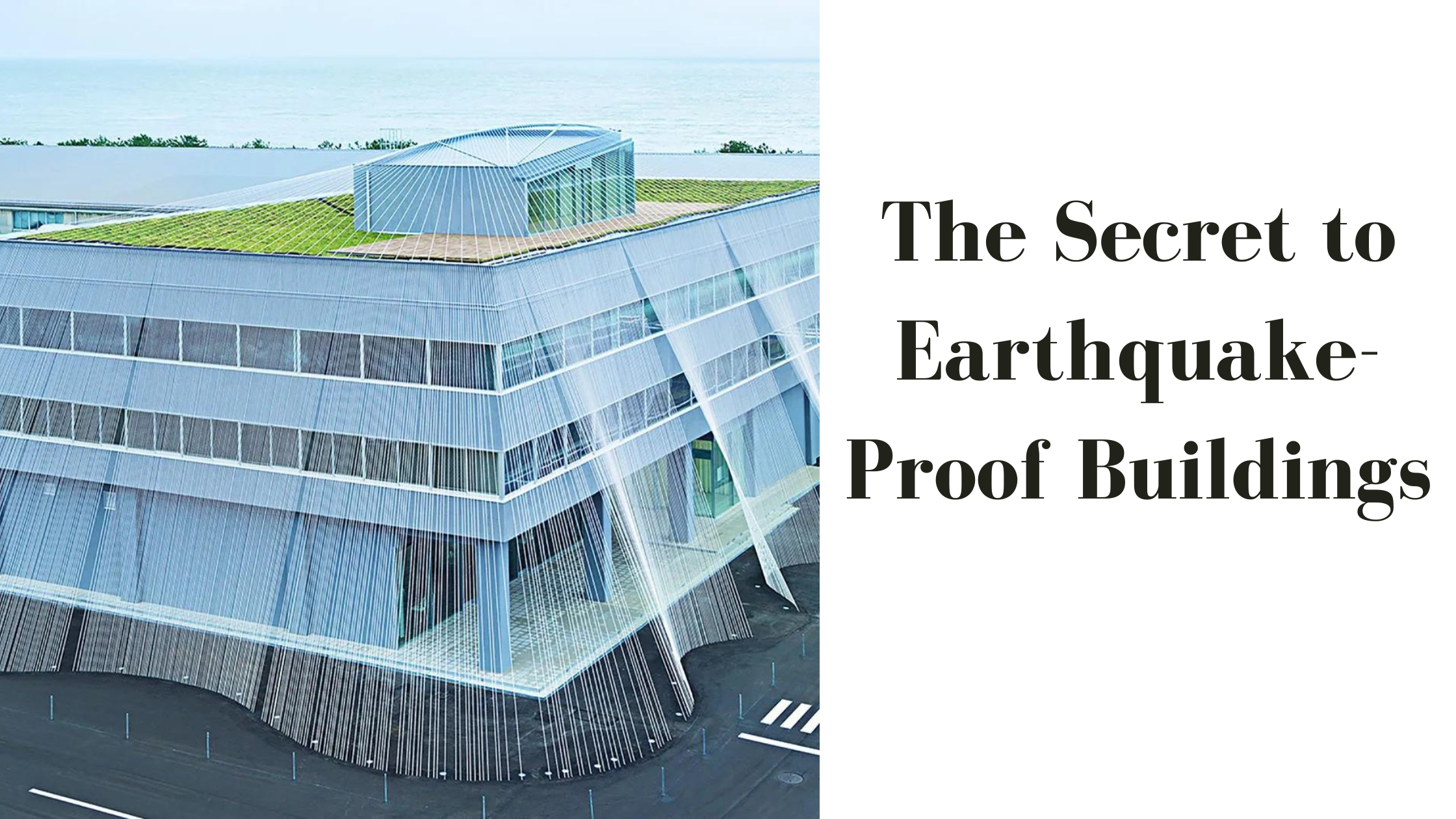Flexible foundations, damping, vibration deflection technologies, shear walls, cross braces, diaphragms, and moment-resisting frames are some of the techniques used by architects and engineers to develop earthquake-proof Buildings. For the occupants of such structures to have the highest level of stability and safety, these advances are crucial.
We have constructed magnificent cities and structures throughout history, only for them to be destroyed by the forces of nature. One of the most devastating forces on Earth are earthquakes; seismic waves traveling through the ground have the power to demolish structures, claim lives, and incur enormous costs for damage and reconstruction.
Sixteen of the 20,000 average annual earthquakes, according to the National Earthquake Information Center, are considered catastrophic disasters. Over 2,000 people lost their lives when an earthquake of a magnitude of 7.2 devastated the southwest of Haiti on August 14, 2021. Much of the damage was caused by buildings collapsing with people inside, much like in previous earthquakes.
Sadly, in earthquake-prone areas, such earthquakes can occur at any time, which is why earthquake-resistant construction is crucial anywhere in the globe.
In order to better equip structures to resist earthquakes, engineers have developed novel designs and building materials throughout the last several decades. To find out how modern structures are intended to withstand earthquakes, continue reading or go to the infographic below.Listing of Contents
The Effects Of Earthquakes On Buildings
It’s critical to comprehend how earthquakes affect man-made structures before we examine the characteristics of earthquake-resistant buildings. When an earthquake happens, shock waves that travel in all directions are sent through the earth at brief, fast intervals. Buildings can typically withstand the vertical forces caused by their weight and gravity, but not the side-to-side forces produced by earthquakes.
Walls, floors, columns, beams, and the braces holding them together shake due to this horizontal movement. Extreme stress is applied by the differential in movement between the top and bottom of structures, which finally leads to the rupture of the supporting frame and the collapse of the structure.
Four Techniques For Building Structures Resistant To Earthquakes
Engineers strive to counteract the stresses of a probable earthquake and reinforce the structure in order to develop a building that is earthquake-proof. The plan is to have the building push in the opposite direction from the direction that earthquakes release energy in. These are a few techniques for making buildings more earthquake-resistant.
1. Establish A Modular Base
Base isolation is a technique that allows a structure to be “lifted” above the ground in order to withstand ground pressures. Building a structure on top of flexible steel, rubber, and lead pads is known as base isolation. During an earthquake, the isolators vibrate as the base shifts, but the structure stays stable. By doing this, seismic vibrations are efficiently absorbed and kept from passing through the building.
2. Damping Counter Forces
You might be shocked to hear that engineers also utilize a variation of shock absorbers—which you may be familiar with from automobiles—in earthquake-resistant structures. Shock absorbers lessen the force on the structure and lessen the size of shockwaves, much as how they are used in automobiles. They use pendulum power and vibration control systems to do this.
Devices for Vibrational Control
Using this technique, dampers are positioned between columns and beams on every floor of a structure. Every damper is made up of piston heads that are housed in silicone oil-filled cylinders. The structure distributes vibratory energy into the pistons, which press on the oil during an earthquake. The power of the vibrations is subsequently released when the energy is converted to heat.
Tendulum Force
Pendulum power is another popular dampening technique that is mostly utilized in skyscrapers. In order to do this, engineers hang a big ball from steel cables that are connected to a hydraulic system located at the summit of the structure. The ball functions as a pendulum and swings in the opposite direction to steady the structure when it starts to waver. Similar to damping, these characteristics are adjusted to coincide with and offset an earthquake’s movement of the building.
3. Prevent Vibrations In Buildings
Researchers are exploring with methods that structures may deflect and redirect the energy from earthquakes totally, as opposed to only counteracting pressures. This invention, known as the “seismic invisibility cloak,” entails constructing a cloak out of 100 concentric rings made of concrete and plastic, which is then buried at least three feet below the building’s foundation.
4. Strengthen The Structure Of The Building
Buildings must reorganize the forces that pass through them during a seismic event in order to resist collapsing.
The main components of a building’s reinforcement include diaphragms, moment-resisting frames, shear walls, and cross braces.
One helpful architectural technique that can aid in the transfer of seismic stress is shear walls. These walls, which are composed of many panels, aid a structure in maintaining its form when moving. Often, steel diagonal cross bracing are used to support shear walls. These beams can withstand tension and compression, which helps to oppose push and pressure forces.
Cross braces boost load capacity by attaching to the frame of a structure by bracing stud to stud in an X pattern. Cross-bracing stabilizes buildings against strong winds and seismic activity.
Another essential component of a building’s construction is its diaphragm. Diaphragms, which are made up of the building’s decks, roof, and floors, assist in pushing pressures toward the vertical parts of the building and relieving strain from the floor.
Moment-resisting frames provide a building’s design more flexibility. These constructions are inserted between the joints of a building so that the joints stay stiff but the columns and beams may flex. As a result, the structure can withstand an earthquake’s greater pressures while still giving architects creative leeway in how to organize its components.
Which Kind of Building Is Most Earthquake-Safe?
Taller buildings are safer than tougher, shorter ones, claims Exploratorium. During the seismic shaking that occurs during an earthquake, flexibility is crucial, and taller buildings tend to be more flexible. In fact, in earthquake-prone locations, engineers have to design structures that are even more resilient to stresses than ones that would be required for a higher structure.
Naturally, the building’s material composition has a significant role in determining how earthquake-resistant the structure is. In earthquake-resistant construction, the most common materials utilized are steel, concrete, and wood.
Great Equipment Is The Foundation Of Great Construction
Scientists and engineers have developed a number of methods over time to effectively design earthquake-proof structures. Even with today’s sophisticated materials and technology, buildings may not always be able to survive strong earthquakes without suffering any damage. Even so, we may see it as a huge accomplishment if a structure is able to prevent collapse and preserve lives as well as communities.
BigRentz provides all the heavy equipment you need to complete any form of construction project, no matter what kind you’re starting. Every task in all 50 states may be completed using rental construction equipment, from major commercial construction to household ones. BigRentz has everything from earthmoving equipment to materials handling.



